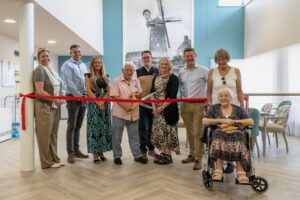 We need a guiding vision for the UK in a rapidly changing world, says Guy Clifton from accountancy group Grant Thornton, as it launches its manifesto for a vibrant economy
We need a guiding vision for the UK in a rapidly changing world, says Guy Clifton from accountancy group Grant Thornton, as it launches its manifesto for a vibrant economy
Over the last 18 months, Grant Thornton has been exploring how to shape a vibrant economy in the UK.
Through a series of city-based inquiries, meetings, round-tables and events, we have been bringing together people from the public, private and not-for-profit sectors to discuss what is already working, hopes for the future and how, collectively, we can make these a reality.
Through these discussions, we have found that a leading priority – for all sectors – is the need for a guiding vision for the UK in a rapidly changing world. A vision is emerging around creating a more prosperous UK by building the most collaborative, open, trusted and connected economy in the world.
This work has informed our vibrant economy manifesto, which we will present to the new government following this week’s general election, and seek to work with them and organisations across the UK to make it happen.
Our manifesto focuses on the three pillars of a vibrant economy: building trust and integrity in markets, unlocking sustainable growth, and creating environments where people and businesses flourish. Considering the last of these pillars, we have identified some key priorities for the next government to tackle.
1. Developing infrastructure to enable local growth
Cities and shire areas need the powers and frameworks to collaborate on strategic issues and to be able to raise finance to invest in infrastructure priorities. Devolution needs to continue in England across all places, with governance models not being a ‘one-size-fits all’. Priorities include broadband, airport capacity in the north and east-west transport links.
Addressing the housing shortage, particularly in London and the south-east, is a vital part of this. There simply is not enough available land on which to build, and green belt legislation, though designed to allow people living in cities space to breathe, has become restrictive and is in need of modernisation. Without further provision to free up more land to build on, the young people that we need to protect the future of our economy will not be able to afford housing, and council spending on housing the homeless will continue to rise.
Business rates are also ripe for review – a property-based tax is no longer an accurate basis for taxing the activity and value of local business, in particular as this source of funding becomes increasingly important to the provision of local authority services with the phasing out of the government’s block grant.
2. Creating a healthier population and financially sustainable NHS
Demographic and funding pressures mean that the NHS no longer remains sustainable, and the integration of health and social care – recognised as critical by all key decision makers – remains more aspiration than reality. There is an opportunity for communities to take a more holistic approach to health, for example by creating healthier spaces and workplaces and tackling air quality, and to use technology to provide more accessible, cheaper diagnosis and treatment for many routine issues.
3. Finding a better way to measure the vibrancy of places
When applied to a place we can see that traditional indicators of prosperity, such as GVA, do not tell the full story. To address this we have developed a Vibrant Economy Index to measure the current and future vibrancy of places. The index uses the geography of local authority areas and identifies six broad objectives for society: prosperity, dynamism and opportunity, inclusion and equality, health wellbeing and happiness, resilience and sustainability, and community trust and belonging.
The city of Manchester, for example, is associated with dynamic economic success. While our index confirms this, it also identifies that the Greater Manchester area overall has exceptionally poor health outcomes, generations of low education attainment and deep-rooted joblessness. These factors threaten future prosperity, as success depends on people’s productive participation in the wider local economy, rather than in concentrated pockets.
Every place has its own challenges and opportunities. Understanding what these are, and the dynamic between them, will help unlock everybody’s ability to thrive.
Over the coming months we will continue to develop the vibrant economy index through discussions with businesses, citizens and government at a national and local level.
- More information on Grant Thornton’s Vibrant Economy work can be found here.

















Leave a Reply